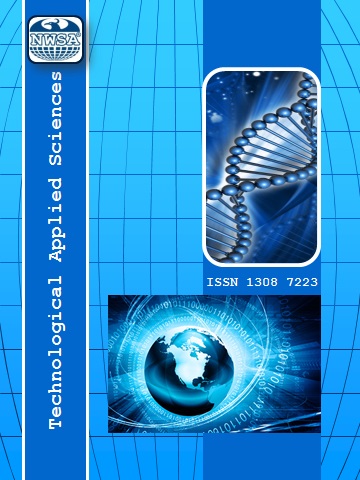References
[1] ASTM D 2244-3, (2007). Standard practice for calculation or color tolerances and color, differences from instrumentally measured color coordinates. ASTM International, West Conshohocken, PA.
[2] ASTM E313-15e1, (2015). Standard practice for calculating yellowness and whiteness indices from instrumentally measured color coordinates. ASTM International, West Conshohocken, PA.
[3] Ayata, Ü. and Çamlybel, O., (2024). Effects of wax application on color, glossiness, and whiteness index values of American black cherry (Prunus serotina) wood. Les/Wood, 73(1):81-90. DOI: 10.26614/les-wood.2024.v73n01a07.
[4] Bolza, E. and Kloot, N.H., (1976). The mechanical properties of 81 New Guinea timbers. Technical Paper No. 11, Division of Building Research, CSIRO, Melbourne, Australia.
[5] Bulian, F. and Graystone, J.A., (2009). Chapter 3, Raw materials for wood coatings (1) - Film formers (Binders, Resins and Polymers), Wood Coatings: Theory and Practice, DOI: 10.1016/B978-0-444-52840-7.00003-5, Published by Elsevier. ISBN: 9780444528407.
[6] Çamlybel, O. ve Ayata, Ü., (2024). Limon (Citrus limon (L.) Burm.) odunu yüzeylerine uygulanmy? balmumu katmanlarynda seçilmi? bazy yüzey özellikleri üzerine farkly kat sayylarynyn etkileri. European Conferences 5. Uluslararasy Sa?lyk, Mühendislik ve Uygulamaly Bilimler Kongresi, 13-16 Haziran 2024, Roma, Ytalya, 545-553.
[7] DIN 5033, (1979). Deutsche Normen, Farbmessung. Normenausschuß Farbe (FNF) im DIN Deutsches Institut für Normung eV, Beuth, Berlin März.
[8] Guibal, D., Cerre, J.C., Gérard, J., and Paradis, S., (2017). Tropical Timber Atlas: Technological characteristics and uses: Quae.
[9] Hsu, O.H. and Bender, H.S., (1988). Water repellent efficacy of wax used in hardboard. Industrial & Engineering Chemistry Research, 27(7):1296-1300. DOI: 10.1021/ie00079a034.
[10] ISO 2813, (1994). Paints and varnishes determination of specular gloss of non-metallic paint films at 20 degrees, 60 degrees and 85 degrees, International Organization for Standardization, Geneva, Switzerland.
[11] ISO 554, (1976). Standard atmospheres for conditioning and/or testing, International Standardization Organization, Geneva, Switzerland.
[12] Jankowska, A., (2018). Assessment of sorptive properties of selected tropical wood species. Drvna Industrija, 69(1):35-42. DOI: 10.5552/drind.2018.1733.
[13] Kylyç, A. and Niemz, P., (2012). Extractives in some tropical woods. European Journal of Wood and Wood Products, 70:79-83. DOI: 10.1007/s00107-010-0489-8.
[14] Lange, D.R., (1999). Fundamentals of Colourimetry Application Report No. 10e. DR Lange: New York, NY, USA.
[15] Mukhtar, A.S., (1993). Pembinaan dan Pelestarian Pohon merbau (Intsia spp) di Indonesia. Prosiding Seminar sehari Optimalisasi Pemanfaatan Kayu Merbau di indonesia, APHI.
[16] Peng, L., Fang C., and Jiaju, Y., (1988). Identification, properties and uses some Southeast Asian woods. International Tropical Timber Organization (ITTO), Research Institute of Wood Industry, Chinese Academy of Forestry, 201 pages.
[17] Reinprecht, L. and Vidholdová, Z., (2019). Rot resistance of tropical wood species affected by water leaching. BioResources, 14(4): 8664-8677. DOI: 10.15376/biores.14.4.8664-8677.
[18] Roberts, A.G., (1968). Organic coatings; properties, selection, and use (No:7). US Department of Commerce, National Bureau of Standards.
[19] Sari, R.K., Prayogo, Y.H., Sari, R.A.L., Asidah, N., Rafi, M., Wientarsih, I., and Darmawan, W., (2021). Intsia bijuga heartwood extract and its phytosome as tyrosinase inhibitor, antioxidant, and sun protector. Forests, 12(12):1792. DOI: 10.3390/f12121792.
[20] Scholz, G., Militz, H., Gascón-Garrido, P., Ibiza-Palacios, M.S., Oliver-Villanueva, J.V., Peters, B.C., and Fitzgerald, C.J., (2010). Improved termite resistance of wood by wax impregnation. International Biodeterioration & Biodegradation, 64(8): 688-693. DOI: 10.1016/j.ibiod.2010.05.012
[21] Smith, I., Landis, E., and Gong, M., (2003). Fracture and fatigue in wood. John Wiley & Sons.
[22] Smith, S.E. and Read, D.J., (2010). Mycorrhizal symbiosis. Academic press.
[23] Thaman, R., Thomson, L., DeMeo, R., Areki, F., and Elevitch, C., (2006). Intsia bijuga (vesi), Species Profiles for Pacific Island Agroforestry. Permanent Agriculture Bogor-Indonesia, C.R. Elevitch, (ed.).
[24] Tong, P.S., Chen, H.K., Hewitt, J., and Affre, A., (2009). Review of trade in merbau from major range states. Petaling Jaya, Selangor, Malaysia: TRAFFIC Southeast Asia. ISBN: 9789833393176.
[25] Wang, L. and Wang, T., (2007). Chemical modification of partially hydrogenated vegetable oil to improve its functional properties for candles. Journal of the American Oil Chemists Society, 84:1149-1159.
[26] Wolfmeier, U., Schmidt, H., Heinrichs, F.L., Michalczyk, G., Payer, W., Dietsche, W., Boehlke, K., Hohner, G., and Wildgruber, J., (2005). Waxes, Wiley-VCH, Weinheim.
 +90(535) 849 84 68
+90(535) 849 84 68 nwsa.akademi@hotmail.com
nwsa.akademi@hotmail.com Fırat Akademi Samsun-Türkiye
Fırat Akademi Samsun-Türkiye
